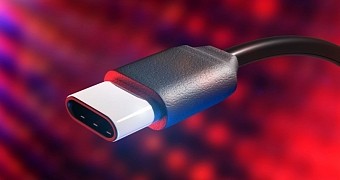The just-launched Surface Pro lacks USB-C ports just like the Surface Laptop released by Microsoft earlier this month, but the company says it has found a solution.
Surface buyers who want to use USB-C will be able to purchase a dedicated dongle that will work with both the Surface Pro and the Surface Laptops via the Surface connector. The dongle will launch later this year, with pricing information to be announced at that point.
Panos Panay, the head of the Surface lineup at Microsoft, explained in an interview that USB-C is just not there yet and this is the reason the company isn’t yet adopting it on its devices.
Panay also poked fun at Apple for going all-in on USB-C and then offering dongles for all the other devices that customers wanted to use with their MacBook.
“If you love Type-C, it means you love dongles,” he said. “We’re giving a dongle to people who love dongles.”
The lack of USB-C on new Surface models
Speaking about the reasons for not offering USB-C on Surface Laptop and the Surface Pro, Panay reiterated some of the words he said earlier this month, pointing out that this port could easily create confusion among customers and in the end backfire against the company.
Panay said after the launch of the Surface Laptop that Type-C isn’t yet available on Surface models because people tend to use a wide variety of cables and chargers that could affect the overall experience, which in turn would only draw more criticism against the company.
“I learned a super valuable lesson with Surface 3. What we learned very quickly, which was painful for me, was that it was true what we said: you can charge your device with a phone charger. The problem was that it would take 10 or 12 hours depending on how small the wattage is on the charger,” Panay explained. “The challenge is when the customer calls you and says ‘my product doesn’t work, what did you do?’”
“So why not offering USB-C without support for charging?” you could ask. It’s because implementing USB-C on the Surface means removing another connector “that matters,” and this could in the end have the exact same results and disappoint a part of its customers.
This is how the dongle is supposed to tackle the problem, as it retains the existing connectors, but also makes USB-C available for interested buyers.

 14 DAY TRIAL //
14 DAY TRIAL //